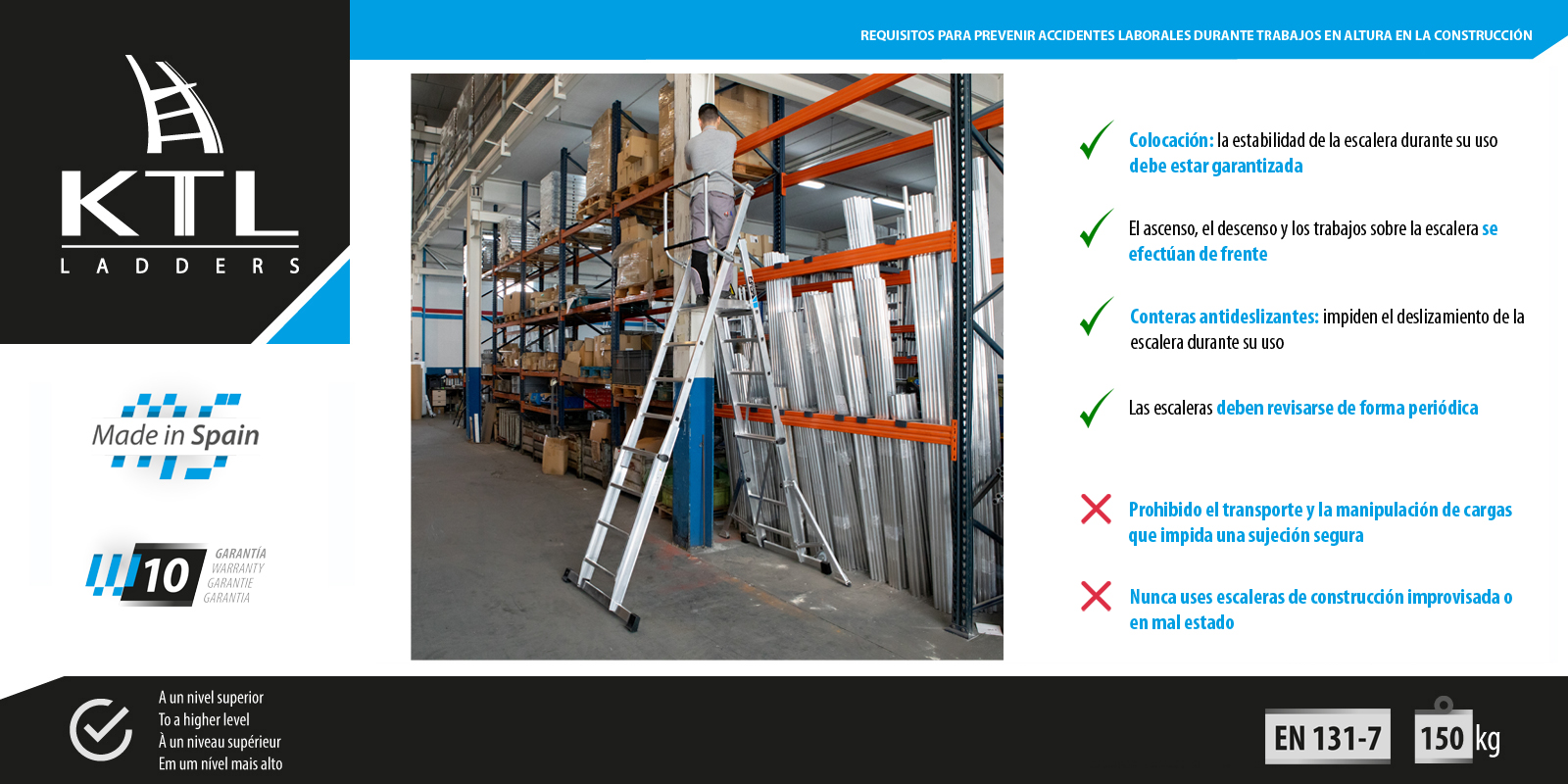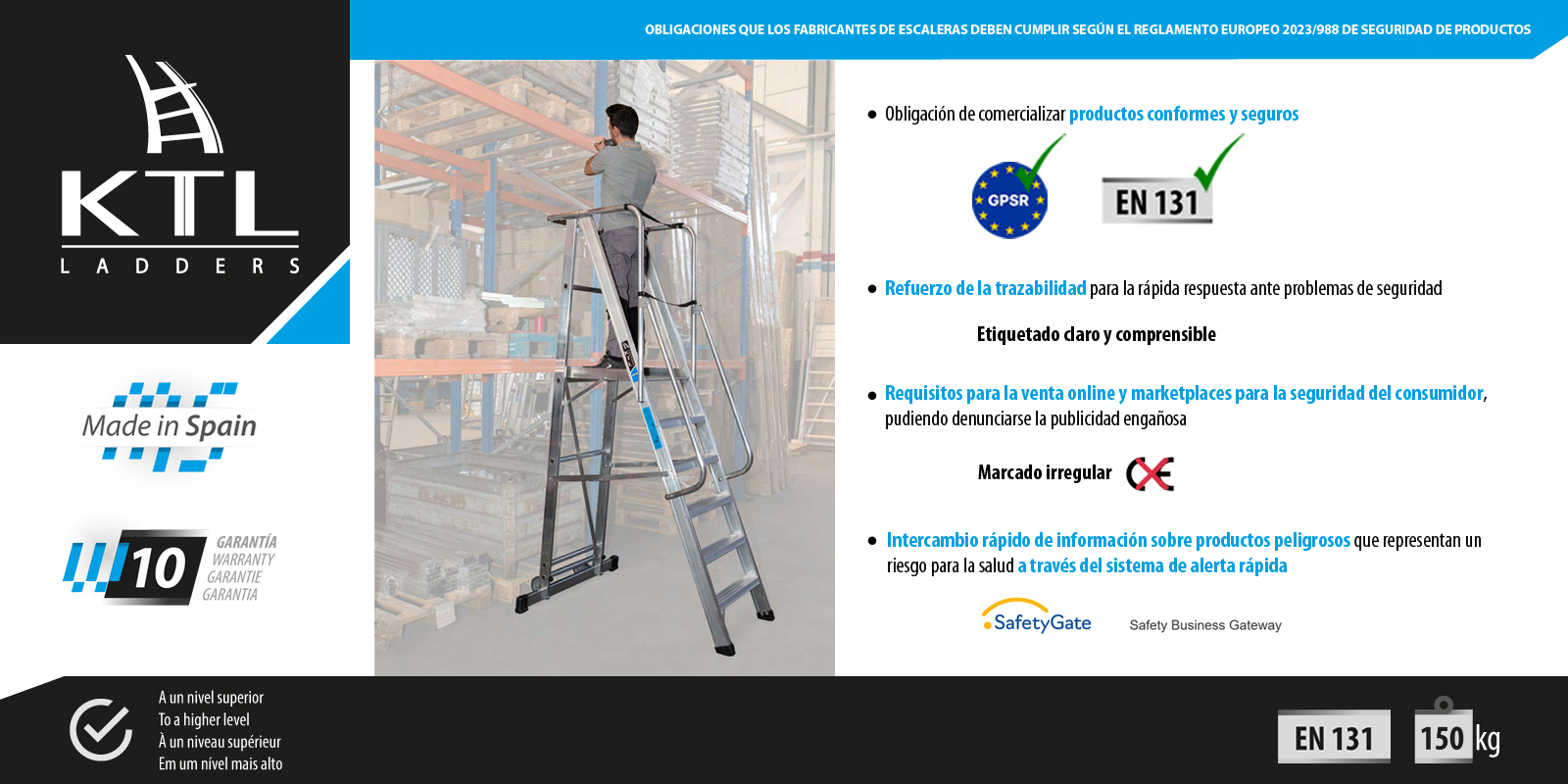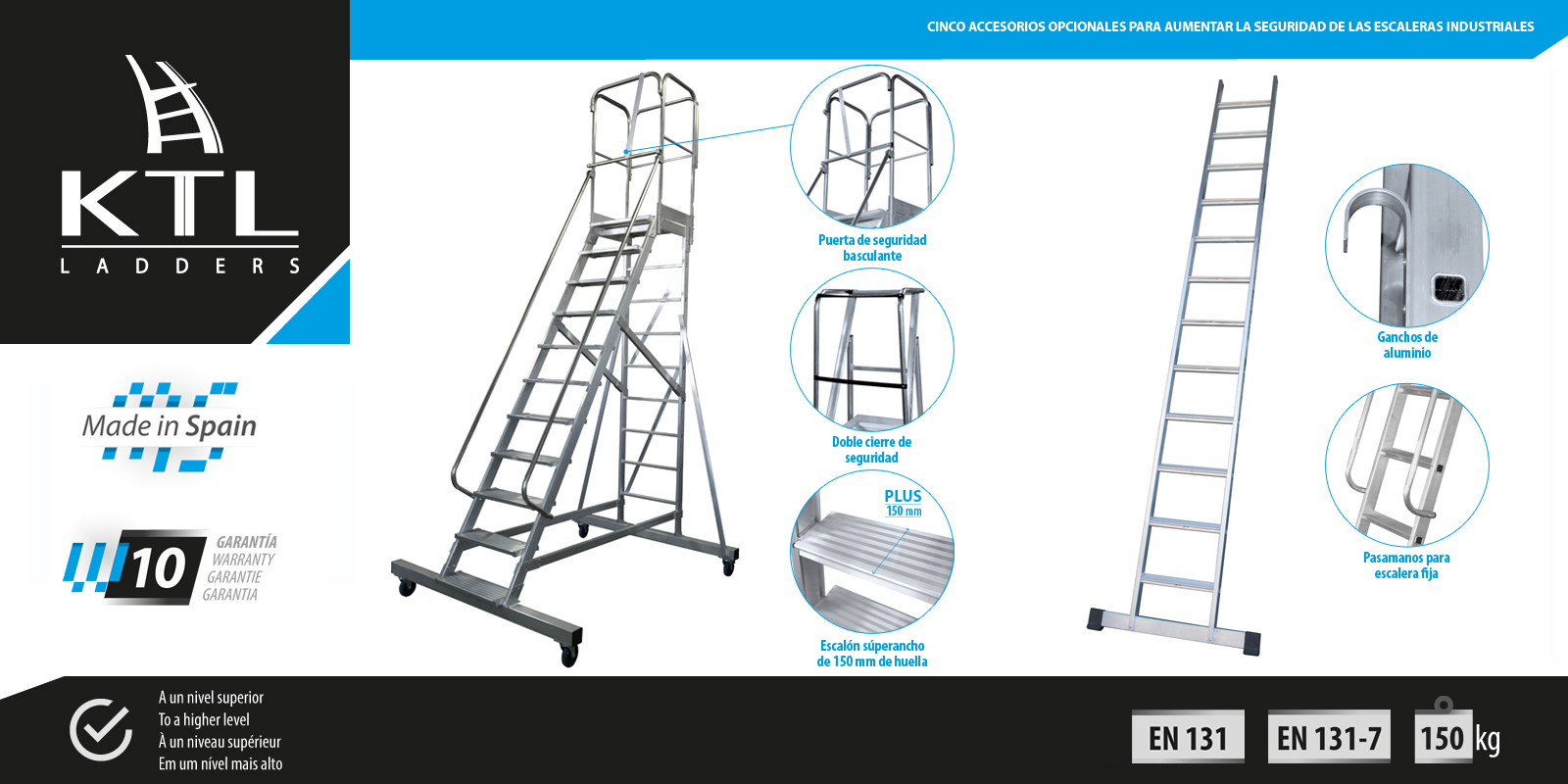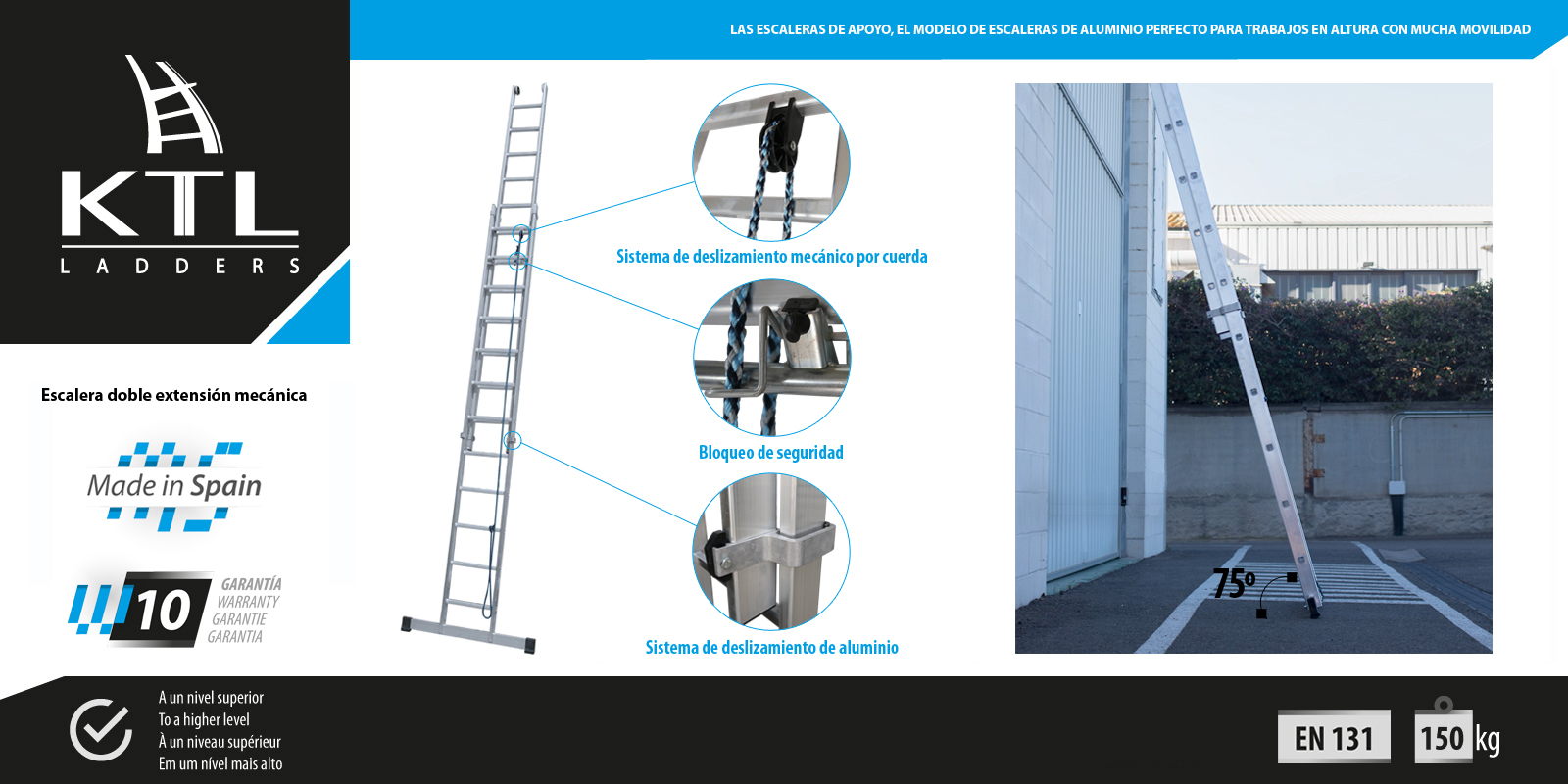Ladders are essential tools in numerous industries and jobs. In the construction sector, these tools play an important role in allowing workers to access different height levels safely and comfortably to perform tasks such as pipe installation, repairs, or electrical cable placement.
In construction, where portable ladders and scaffolding are used, the percentage of work accidents from falls at height increases due to tasks that require dangerous movements, manual handling of loads at height, or the use of defective or damaged ladders. These incidents, which can sometimes have fatal consequences, are easy to avoid as long as professionals follow the necessary safety measures.
To promote work accident prevention, KTL-Ladders emphasizes the importance of identifying the causes of these accidents and the need for companies to have a Risk Prevention Department (PRL) that trains their workers in the correct and safe use of ladders to ensure their safety and well-being during height work. Additionally, portable ladders must comply with European safety standards established in Standard EN 131, and workers must check, before each use, the optimal condition of ladder components such as rungs, non-slip feet, or safety straps.
In the construction sector, it is necessary to consider the provisions of Royal Decree 1627/1997 –minimum safety and health requirements for construction works-, which establishes that the ladders in workplaces must comply with the specific regulations. Furthermore, the VII general collective agreement for the construction sector of September 2023, which regulates the general working conditions applicable throughout the sector, sets requirements for the safe, correct, and appropriate use of ladders. Additionally, Royal Decree 2177/2004, -which establishes minimum safety and health provisions for the use of work equipment by workers in temporary work at height-, specifies the following measures:
- Ladders must have the necessary resistance and support or securing elements, or both, to ensure that their use under the conditions for which they were designed does not pose a risk of falling due to breakage or displacement. Additionally, stepladders must have safety features to prevent accidental opening.
- Using a ladder as a safe working position at height should be limited to situations where the use of other, safer equipment is not justified due to the low level of risk, the short duration of use, and/or site conditions that the company cannot modify. This justification should be included in the company’s risk assessment.
During the use of ladders, the following rules must be observed:
- They should be placed in such a way that stability during use is ensured. The ladder’s support points must rest firmly on a suitable, stable, resistant, and immobile support, so that the rungs are horizontal.
- The ladder’s feet must be prevented from slipping during use. Access ladders should be long enough to extend at least one meter above the working plane they reach. Ladders composed of several extendable elements must be used in a way that ensures these elements are secured, while single ladders should be positioned at an approximate angle of 75º to the horizontal.
- Ascending, descending, and working from the ladder should be done facing forward. Ladders must be used in a way that allows workers to maintain a secure point of support and grip at all times. Work at more than 3.50 meters above the ground, which requires dangerous movements or efforts that jeopardize the worker’s stability, should only be carried out with the use of fall protection equipment or alternative protective measures.
- Transporting and handling loads from the ladder is prohibited if their weight or dimensions could compromise worker safety.
- Ladders should not be used by two or more people simultaneously.
- Ladders and, in particular, ladders longer than 5 meters for which there are no guarantees of resistance, should not be used. Additionally, the use of makeshift ladders is prohibited.
- Ladders must be periodically inspected, and the use of painted wooden ladders is prohibited due to the difficulty in detecting potential defects.
Therefore, adopting preventive measures significantly reduces the incidence of accidents and work-related injuries, promoting a safer work environment for professionals. It is essential to provide adequate training to all workers on safety, use personal protective equipment –helmets, goggles, safety footwear, gloves-, regularly inspect ladders, avoid distractions, and follow safety rules at all times to ensure safe height work.
At KTL-Ladders, we manufacture safe, durable ladders in Spain, certified with the European Standard EN 131, providing superior safety, guarantee, sustainability, design, and quality.




